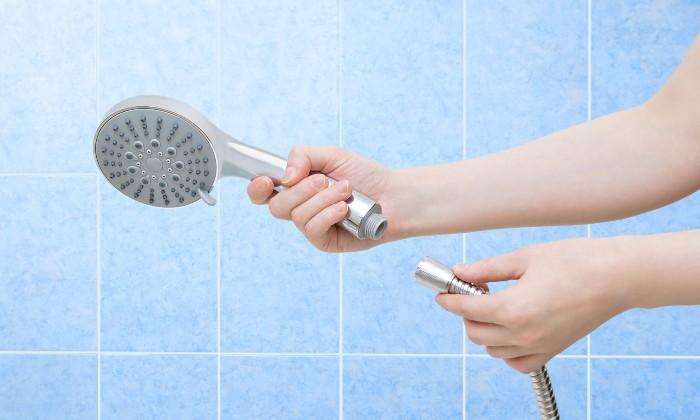Subscribe to our Telegram channel for the latest stories and updates.
With the recent spike of Covid-19 cases, the majority of Malaysians have returned to work-from-home or learning-from-home practice as a preventive measure to (once again!) curb the spread of the virus.
With more people wanting to reduce unnecessary contacts, the home has become not only a place to be with our loved ones, but also as an extended workplace and classroom for those who are working and studying from home or only heading to the office and school on a rotation basis.
Read More: “Back To Work From Home” Urges KJ As Covid Cases Continue To Rise
There are many advantages to working/studying from home such as reduced commuting time and more quality moments with family.
However, one of the downsides to staying at home for longer periods of time every day will be encountering higher water and electricity bills due to increased water and energy consumption – especially when home appliances are switched on most of the time in a day.
According to Tenaga Nasional Berhad (TNB), electrical appliances with cooling systems such as refrigerators, air conditioners and water purifiers are some of the culprits to higher electricity bills, while water usage has also increased to carry out daily routines such as cleaning and cooking as people are using them more in their self-imposed lockdown.
In view of the current situation and considering that we may need to WFH or LFH till the cases go down, it is time to check our home appliances that cause the most water and energy consumption.
There are simple actions that will help us minimise our spending on water and electricity bills every month, at the same time uplifting our home environment for the better!
Older appliances require more energy to run than newer ones, especially appliances with cooling systems such as air conditioners and refrigerators that use the most power.
Naturally, this contributes to higher electricity bills. You may consider replacing your old cooling appliances with Energy Star-certified appliances, which are appliances certified by the Energy Commission to manufacturers of electrical appliances who comply with the standards of the energy performance test.
Replacing old appliances may be costly at first, but it will benefit you, in the long run, thanks to the reduction in electric consumption and carbon footprint from the electricity generation as well.

If you are already using Energy Star-certified appliances (or prefer to use older appliances), it is recommended to clean the appliances regularly to reduce energy consumption and prolong product lifespan as dirty filters in an air conditioner and an overpacked refrigerator will block the airflow and put more strain on the appliances to maintain the temperature.
When it comes to home water filters, many would relate it to countertop or under-sink water filters that help to filter impurities for cleaner drinking water.
Apart from countertop and under-sink water filters, an energy-saving point-of-entry (POE) water filter – installed at the main pipeline that supplies water to your home – would be a great option to consider!
If you already have a water filter installed in your home, it is encouraged to conduct regular checking with your service provider to ensure it is functioning well and also be aware when it is time to replace an old water filter with an advanced energy-saving model.
According to Waterco Malaysia Regional Business Development Manager Koo Zao Cheong, installing a POE water filter will bring numerous benefits to homes and is one of the best solutions to water wastage and high energy consumption.
Dirt, dust, sand and other contaminants from unfiltered water will form sediment build-up that can damage appliances like washing machines, water heaters and dishwashers. When water is not filtered properly before flowing into these appliances, the sediment will increase the energy consumption for the appliances as more power is needed for the appliances to function optimally.
He explained that POE water filters can prevent sediment build-up thus prolonging the lifespan and preserving the energy efficiency of home appliances.
You may have noticed the constant drip from your bathroom and kitchen’s faucets. By simply fixing the leaks, you can actually save gallons of water a day!
In addition to fixing dripping faucets, it is useful to check if your faucets and showerheads are equipped with water-conserving fixtures.
Compared to older fixtures, newer bathroom fixtures like toilets, showerheads and faucets with low-flow features are designed to be more water-efficient than older models and can save hundreds of gallons a month.
Consider installing low-flow showerheads and adding aerators to faucets if your fixtures are older models to ensure good water pressure and reduce water wastage.
With us constantly being home, no doubt there will be times where we will switch on the lights for comfort, especially during work or virtual classes.
The light bulbs you use can be a major contributor to your electricity bill. One of the oldest energy-saving hacks is replacing incandescent bulbs with LED bulbs as LED lighting uses 25-80% less electricity compared to the former.
If you are still using incandescent bulbs, consider switching to LED bulbs for energy saving and longer lifespans.
Whether you prefer to fix your old appliances or replace them with more advanced products with energy-efficient features, checking and examining your home appliances regularly is important to manage water and electricity usage while prolonging appliances’ lifespan.
Not only will this be beneficial for our homes and quality of living, but it will also bring positive impacts on our environment down the road.
Share your thoughts with us via TRP’s Facebook, Twitter, and Instagram.









